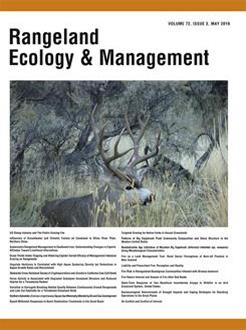Despite the importance of vegetative reproduction in annual tiller replacement, little is known about the patterns and timing of tiller recruitment from the bud bank, especially regarding fire return intervals and seasons of fire. We examined aboveground plant density, temporal patterns of tiller production, and belowground bud bank dynamics for Bouteloua gracilis (Willd ex. Kunth) Lag. ex Griffiths), Pascopyrum smithii (Rydb.) A. Löve, and Hesperostipa comata (Trin. & Rupr.) Barkworth following summer, fall, and spring prescribed fires at 2-yr, 3-yr, and 6-yr fire return intervals, and their interactions. Fire treatments were initiated in 2006, and buds were assessed July 2011 through July 2013. Density and number of reproductive B. gracilis tillers increased in 2013 following drought during 2012, unlike H. comata, which decreased reproductive tiller production. Irrespective of fire treatments, B. gracilis produced the most buds (8 - 10 buds · tiller-1) and H. comata produced the least (2 - 3 buds · tiller-1), with P. smithii producing an intermediate amount (6 - 8 buds · tiller-1). Immediate B. gracilis and P. smithii bud mortality did not occur for all season and fire return interval treatments. However, H. comata bud mortality increased immediately following summer and fall prescribed fires. Three-yr fire return intervals increased active buds throughout the 2013 winter and growing season for B. gracilis and P. smithii relative to control plots and 2- and 6-yr fire return intervals. Fire stimulated bud activity of B. gracilis and P. smithii relative to nonburned plots. The aboveground and belowground response of H. comata indicated meristem limitations following fire treatments, illustrating greater vulnerability to fire for that species than B. gracilis and P. smithii.
How to translate text using browser tools
30 April 2019
Fire Return Interval and Season of Fire Alter Bud Banks
M.L. Russell,
L.T. Vermeire,
A.C. Ganguli,
J.R. Hendrickson
ACCESS THE FULL ARTICLE

Rangeland Ecology and Management
Vol. 72 • No. 3
May 2019
Vol. 72 • No. 3
May 2019
dormancy
grassland
meristem limitation
prescribed burning
tiller
vegetative reproduction




